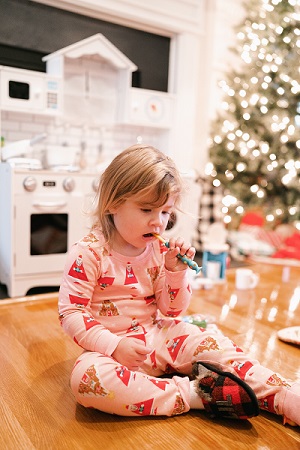Helpful is a software engineer with a background in software engineering. He enjoys working on different projects and expanding his knowledge in the field.

Let’s talk about something important for parents: keeping those tiny teeth clean. Babies have their own mini toothbrushes, and we want to make sure they’re super clean, right?
But here’s the big question: can you use those fancy toothbrush sanitizers, the ones made for grown-up toothbrushes, on baby toothbrushes? Well, we’re about to analyze it for you in simple terms.

Baby Toothbrushes: They’re Special
First things first, baby toothbrushes are like the mini version of adult ones. They’ve got softer bristles and smaller heads because babies have delicate gums and tiny teeth. So taking care of their toothbrushes is a big deal.
Understanding Toothbrush Sanitizers
Now, let’s talk about those toothbrush sanitizers. They’re like magic machines that make sure your toothbrush is germ-free. They often use UV-C light to do this.
But here’s the point: while they’re awesome for grown-up toothbrushes, they might not be the best choice for baby ones. Here’s why:
Size and Fit
Baby toothbrushes are way smaller than adult ones, and their bristles are arranged differently. So, trying to fit a baby toothbrush into a regular toothbrush sanitizer might not work well.
It could lead to a half-hearted cleaning job or even damage the baby toothbrush.
Delicate Bristles
Remember, baby toothbrush bristles are super soft to be gentle on those tiny gums. The UV-C light or other sanitizing methods used in toothbrush sanitizers might be a bit too tough on these gentle bristles, and that’s not what we want.
Safety First
Some toothbrush sanitizers produce heat during the cleaning process. That’s a red flag for baby toothbrushes with plastic parts that might not handle high temperatures well.
We’ve got to keep safety in mind, especially with baby stuff.
Taking Care of Baby Toothbrushes Without Sanitizers
Even if toothbrush sanitizers aren’t the best match for baby toothbrushes, there are other ways to make sure they stay clean:
Rinse it well
After each use, give the baby toothbrush a good rinse under the tap to wash away toothpaste and any leftover food bits.
Let it breathe
Leave the toothbrush out to air-dry in an upright position. Avoid stuffy toothbrush holders that trap moisture.
Replace it regularly
Baby toothbrushes need a change every 2-3 months, or when their bristles start looking worn. Fresh toothbrushes work better and stay cleaner.
Store it right
Keep the baby toothbrush in a clean, dry spot. Try not to mix it up with adult toothbrushes to avoid any germ exchange.
Extra Cleaning
Every now and then, you can give the toothbrush a little extra cleaning by soaking it in a mix of water and baby-friendly mouthwash or a sanitizer that’s safe for babies.

Conclusion
So, there you have it: toothbrush sanitizers are great for adult toothbrushes but not the best fit for baby ones. Instead, use these simple tips to make sure your baby’s toothbrush stays squeaky clean.
Proper care and regular replacement are key to keeping those little teeth healthy and happy. If you ever have questions about your baby’s oral care, don’t hesitate to chat with a pediatric dentist or your healthcare provider. They’re there to help you keep those smiles bright!
